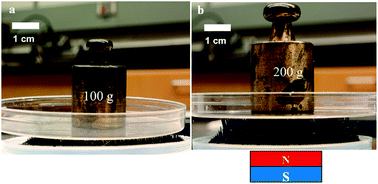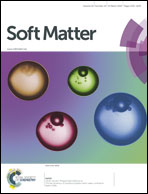Magnetorheological brush – a soft structure with highly tuneable stiffness
Abstract
By combining the field-stiffening effect of magnetorheological (MR) elastomers and the Euler buckling mechanism, we developed a brush-like magneto-active structure with highly tuneable stiffness. When the applied mechanical load is within a certain range, the effective stiffness of the structure can be tuned by several orders of magnitude with the applied magnetic field. The performance of the structure and its dependence on various synthesis parameters, such as the curing field and filler concentration, were investigated experimentally. It is found that the increase in the critical load for buckling is more than the contribution from the stiffening of the MR elastomer. To unravel the relationship between the stiffness increase and the applied field, a theoretical model with coupled mechanical deformation and magnetic field is established. The prediction of the model agrees well with experimental results. The theory may also be used to model the behaviour of other similar materials, such as MR gels. The MR brush developed in this research holds promise for potential applications in smart structures or devices that require mechanical stiffness to be tuneable in a relatively large range. As the amplification mechanism is independent of the base material, it could be used in conjunction with emerging MR materials for further enhanced performance.


 Please wait while we load your content...
Please wait while we load your content...